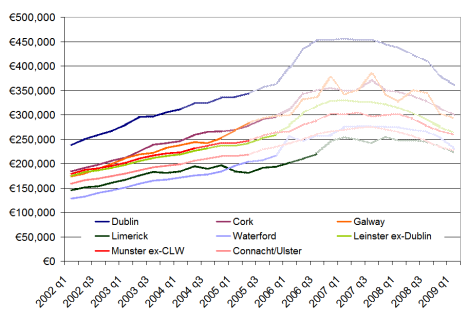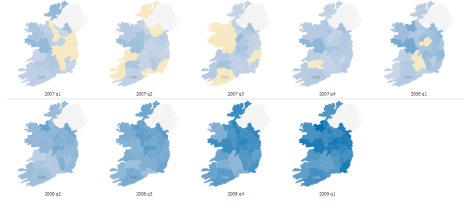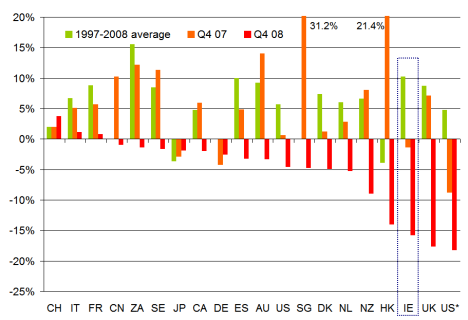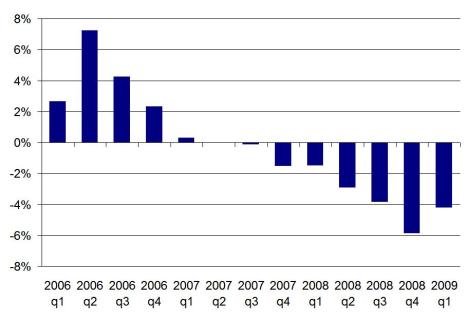Just over 500,000 thousand homes have been built since the start of 2002. Probably the same number again of second-hand homes have been bought in the same period. With the guts of one million properties having changed hands since 2002, how many of those are worth less than now than when they were bought? And how many owners find themselves owing more to the banks than they if they had to sell now?
Taking the daft.ie asking prices by county from 2006 on, and Dept of Environment regional figures before that, it’s possible to construct regional average prices going back in the 1980s. Fortunately, we don’t have to go back that far – but we do have to go back into the first half of this decade. By my calculations, of the half a million homes built since 2002, about 50% are now worth less than when they were bought. That’s based on current asking prices. If asking prices are – as some contend – about 10% above actual closing prices at the moment, the number of homes worth less now than when they were bought rises to 340,000 homes – or two thirds of the houses built since the start of 2002.
But that’s only half the story. Or slightly less actually, as loans for new homes account for just under 50% of all loans. If that ratio is correct, another 286,000 second hand homes now have asking prices less than the prices they were bought for. Again, if asking prices are 10% above what’s actually trading out there, that figure rises to about 382,500. In total, that represents about 725,000 homes that have been bought since 2004 that are now worth less. Depending on whether you take Census or Dept of the Environment figures, that represents between 37% and 43% of homes in the country. Put in plain English, two in five homes in Ireland are worth less now than when they were bought.
How far back has Ireland’s property market rewound? The graph below shows average home values in eight regions for the period 2002-2009. There are three shades of colour used – the lightest (further to the right) are house price gains that been wiped out, the medium shade represents current asking price levels, while the full colour lines represent asking prices less 10%. Overall, the asking price for the typical home in Ireland now is similar to what the home was worth in March 2005. If you believe asking prices are overstating true prices, the typical home in Ireland is now worth the same as it was in July 2004. The two years of bust have undone the last two and a half years of boom. Homes in Connacht and Ulster are worst affected – they are worth the same now as they were five years ago in early 2004.
Negative equity is, however, something more particular. It refers to the outstanding debt that someone owes the bank. In other words, if they sold the house now, would they be able to pay off the remaining debt from the sale price? Naturally, this is a much more complicated exercise. Dept of Environment figures suggest that the typical loan-to-value of new homes since 2002 has been about 75%, while for second-hand homes it’s been closer to 73%. Fortunately, the figures give something of a breakdown. Making some ballpark assumptions for different years, for example any 95%+ mortgage in 2004 or any 70%+ mortgage in 2007/2008, it’s possible to give a rough estimate of the number of homes in negative equity.
Roughly speaking, about half of the homes that are now worth less than when they were bought are in negative equity, in the financial sense of the word. (This makes intuitive sense, as two out of every five mortgages is less than 70%, suggesting a substantial amount of households with some equity still knocking around.) That’s 340,000 homes where if the homeowners have to sell, they will not be able to pay the bank back solely through the money they get from selling the house.
The punchline is that about one in five homes in Ireland is now in negative equity.
Filed under: 3 Property Market | Tagged: connacht, cork, dublin, galway, ireland, irish property market, irish-property-prices, leinster, limerick, munster, negative equity, property, property market, property-prices, recession, ulster, waterford | 11 Comments »










